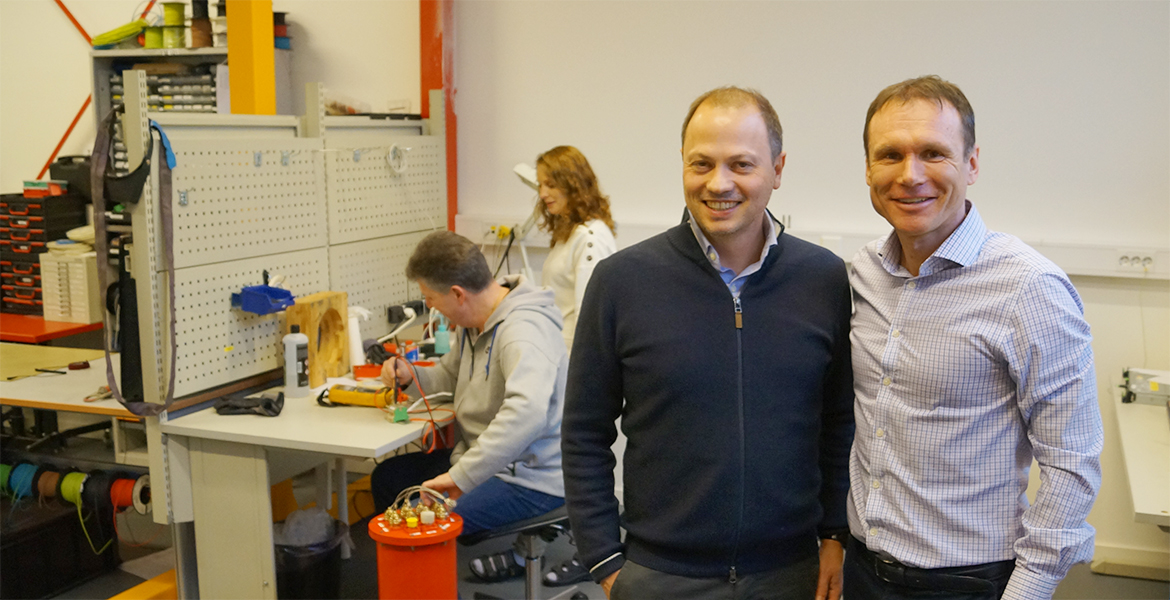In a record breaking 2018 (preliminary results available), Head Energy Group combined over fifty percent revenue growth with a pre-tax profit of 21 million NOK. New businesses, including our in-house engineering departments make a substantial contribution.
The Head Energy Group has invested substantial resources in developing new business areas in recent years: this includes two inhouse engineering departments, an offshore wind setup in Denmark and a dedicated team focusing on infrastructure and civil construction projects.
Subsea and technology focused Head Energy Multicontrol completed a comprehensive restructuring strategic review in 2016. In 2018, these changes really paid off, Managing Director Trond Erik Gundersen explains:
-We went through a difficult process, but in hindsight it was make or break at that point. We have a highly competent staff, with a work ethic second to none. Our problem was that we were not able to convert our know-how and manhours into finished projects and products. Communication with our clients was not clear enough and we let our high margin business cases fund more experimental and risky business cases, with no end-product, Gundersen says.
During 2017 and 2018, Head Energy’s subsea and technology branch has renewed their important RLWI frame agreement with Equinor, strengthened their strategic cooperation with Kongsberg Maritime concerning control systems and utilized spare capacity to stock up on load pins for both topside and subsea use. They are also member of the OMNI Specialist Network, that grants access to new business opportunities in new market segments.
Preliminary 2018 results show that Head Energy Multicontrol delivers good results, with revenues of 34,3 MNOK and a pre-tax profit of 3,1 million NOK.
Aims for further growth
Although 2018 was good, Trond Erik Gundersen aims for further growth in 2019, and not only within oil-related areas:
-We are currently developing some very interesting new solutions for well production optimization, in cooperation with one of our partners, potentially our largest business case yet.
-Now is also a great opportunity to utilize a strong oil & gas market to enter other business areas. We are working hard to bring our electrical control systems towards both aquaculture and infrastructure related projects. Finally, we are part of a project developing a ground-breaking solution for collecting geological data in remote areas. This is something we look very much forward to unveil later in 2019, Trond Erik Gundersen says.
Green is good – and smart
CEO of the Head Energy Group, Morten Leikvoll, credit Trond Erik Gundersen and his team for the improvement over the last two years, along with their willingness to explore new business opportunities and redesign solutions to fit new segments:
-In terms of efficiency and innovation our subsea & technology team has raised the bar for all of us over the last couple of years. I think they are about to take major steps, not only in terms of contributing to good financial results within the Head Energy Group, but as a highly rated supplier of technology and solutions in several markets, Leikvoll states.
The Head Energy Group has a long-term goal of filling the order book with 50 percent non-oil related contracts. Morten Leikvoll says that this is both related to sustainability goals as well as risk diversity:
-On the back of a very good 2018, we have two major elements to keep in mind: First, the upturn in oil & gas has fueled the significant growth both we and many others have experienced in 2017 and 2018. We know that this is a cyclical industry and that somewhere down the line the market will cool down. Diversifying and making our technology available and applicable for other industries is a way to stay ahead of tougher market conditions.
-Secondly, we need to adapt to a new green energy and a sustainable future. Cleaner and more efficient oil production is obviously important, but more so the possibility of transferring our core technology and solutions towards green energy and infrastructure projects. This is a bold statement, of course, but we believe business strategies must have both financial and environmental objectives accounted for, Leikvoll concludes.
